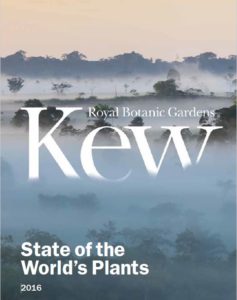So, they say variety is the spice of life. That’s a mantra I try to live by…why settle for mediocrity?
Plants do make the news once in a while, but after you read the Royal Botanic Gardens, Kew report on the state of the world’s plants, you might wonder why we don’t hear about plant news every day.

A cover story by the BBC specifies that, “Scientists have estimated that there are 390,900 plants known to science.” An amazing 369,000 of that total are flowering plants!
Wow! 391K is a LOT of vascular plants. Roughly 2,000 new plants are described each and every year, so the tally will climb up from there. The number of plants and their identities were gleaned from several different databases which are specified in the report.
A very interesting and thought-provoking part of the 84-page report is the information highlighting the uses to which humans put about 10% of the known plants.
Plant uses were categorized and the number of plants in each category as follows:
- human food – 5,538
- medicines – 17,810
- fuels – 1,621
- materials – 11,365
- animal food – 3,649
- poisons – 2,503
- social uses – 1,382
- gene sources – 5,338
- environmental uses – 8,140
- invertebrate food – 683
Medicines, materials and food sources top the list with the most plants in service. Many of the plants highlighted here on wildeherb.com could fit into multiple categories, especially environmental uses, medicines, invertebrate food and social uses.
Climate change, habitat loss and invasive plants are discussed in the report as are plant diseases, extinction risks and the global trade in plants.
Visit State of the World’s Plants to read more and download your copy of this informative report.